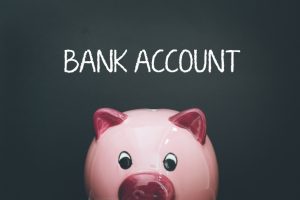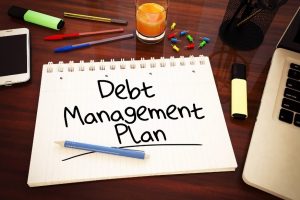Are you finding it hard to manage your money? You’re not alone. Many people in Finland struggle with managing their finances well. But, with the right strategies, you can take charge of your money.
Good financial planning is key to financial stability. By making a budget, focusing on what’s important, and looking into debt consolidation, you can make your finances easier to handle. This way, you can make smart choices with your money and aim for a safer financial future.
Key Takeaways
- Creating a budget is essential for effective financial planning.
- Prioritizing your expenses helps in managing your finances efficiently.
- Exploring debt consolidation options can simplify your payments.
- Taking control of your finances requires a well-thought-out plan.
- Financial stability is achievable with the right strategies.
Understanding Your Current Financial Situation

Knowing your financial status is key to making smart debt choices. To get a clear view, you must assess your total debt.
Assessing Your Total Debt
Assessing your total debt requires two main steps. First, gather all your financial statements. Then, sort the different types of debt you have.
Gathering All Financial Statements
Begin by collecting all your financial documents. This includes bank statements, loan documents, credit card statements, and more. It helps you see the full extent of your debt. Don’t forget debts like personal loans or money owed to friends and family.
Categorizing Different Types of Debt
After gathering your documents, sort your debts. Common types are credit card debt, personal loans, mortgages, and student loans. Sorting your debt helps you focus and plan how to tackle each type.
Knowing the types of debt, their balances, interest rates, and minimum payments helps you manage better.
Creating a Comprehensive Debt Inventory
To tackle your debt, you first need to know what you’re up against. A debt inventory helps you gather all the info you need for a solid plan.
Listing All Debts with Interest Rates and Terms
Begin by listing all your debts, like credit cards and loans. Make sure to note the interest rates and terms for each. This will show you the total amount you owe and the cost of keeping each debt.
- Credit card balances and their respective APRs
- Personal loans, including interest rates and repayment terms
- Mortgage details, such as the outstanding balance and interest rate
- Other debts, like payday loans or student loans
Identifying High-Priority Debts
Not all debts are the same. Some have higher interest rates or urgent deadlines. Find your high-priority debts, like those with high interest or soon due.
High-priority debts typically include:
- Credit cards with high APRs
- Payday loans or other high-interest debts
- Debts with immediate consequences for late payment, like utility bills
Setting Realistic Payoff Timelines
After identifying your debts and their priorities, set realistic payback goals. Think about your income, expenses, and goals when setting these timelines.
A realistic payoff timeline is crucial for staying motivated and on track.
Effective Debt Management Strategies for Finnish Consumers
For Finnish consumers with debt, knowing the right strategies is key. Debt management isn’t a one-size-fits-all solution. It needs a plan that fits your financial situation, debt types, and personal goals.
Debt Avalanche Method
The debt avalanche method is a popular choice. It focuses on paying off debts with the highest interest rates first. This can save you a lot of money in interest over time.
Focusing on Highest Interest Rates First
By paying off debts with the highest interest rates first, you save on total interest. For example, if you have a credit card with an 18% interest rate and a personal loan with a 6% interest rate, pay off the credit card balance first.
Calculating Your Potential Savings
To see how much you can save, calculate the interest difference between your current plan and the debt avalanche method. Use a debt repayment calculator or a spreadsheet for this.
Debt Snowball Method
The debt snowball method involves paying off the smallest debts first, no matter the interest rate. This method gives quick wins and can keep you motivated.
Building Momentum with Small Wins
By paying off small debts first, you reach milestones that boost your motivation. For instance, clearing a small credit card balance can give you a sense of achievement. It also frees up more money to tackle bigger debts.
Debt Consolidation Options in Finland
Debt consolidation combines multiple debts into one loan with a lower interest rate and one monthly payment. In Finland, you can find various consolidation options, like balance transfer credit cards and personal loans.
Debt consolidation offers several benefits:
- It simplifies finances with a single monthly payment
- It can save on interest charges
- It reduces financial stress
When looking at debt consolidation, remember to:
- Review the terms and conditions of the new loan
- Check for any fees associated with consolidation
- Make sure the new loan fits your financial goals
By using these debt management strategies, Finnish consumers can take charge of their finances. They can work towards becoming debt-free.
Developing a Budget That Supports Debt Repayment
To tackle debt, you need a budget that tracks your expenses and supports your debt repayment strategy. A good budget helps you see where your money goes. It also shows where you can cut back to pay more towards your debt.
Creating a Zero-Based Budget
A zero-based budget means every euro is accounted for. You start with your total income and then allocate every euro to a specific expense or savings goal. This ensures your budget adds up to zero.
This method helps you focus on your expenses and debt repayment. To make a zero-based budget, track your income and expenses. Then, categorize your spending and adjust to put more money towards debt repayment.
Finding Extra Money for Debt Payments
Finding extra money for debt payments can be tough, but there are ways to do it. Start by cutting back on unnecessary expenses, like dining out or unused subscriptions.
- Review your budget and find areas to cut back.
- Sell items you no longer need or get a side job to increase your income.
- Use the 50/30/20 rule: Spend 50% on necessary expenses, 30% on discretionary spending, and 20% on saving and debt repayment.
Using Finnish Budgeting Apps and Tools
There are many Finnish budgeting apps and tools to help manage your finances. They keep you on track with your debt repayment goals. Some popular ones include:
| App/Tool | Description | Features |
|---|---|---|
| Nordea Budgeting Tool | A comprehensive budgeting tool that helps you track your expenses and stay on top of your finances. | Expense tracking, budgeting, financial goal setting |
| OP Mobile | A mobile banking app that allows you to manage your finances on the go. | Account management, bill payments, budgeting |
| S-Bank’s Budgeting Tool | A user-friendly budgeting tool that helps you understand your spending habits and make informed financial decisions. | Expense tracking, budgeting, savings goals |
Negotiating with Creditors and Lenders
In Finland, knowing how to negotiate with creditors can improve your financial health. It involves understanding your financial situation, knowing your rights, and clearly communicating your needs.
Approaching Difficult Conversations
When you talk to creditors, be well-prepared. Collect all your financial details, like income, expenses, and debts. This information will support your request for a better payment plan or lower interest rates.
Requesting Lower Interest Rates

Asking for lower interest rates is a smart move. Creditors might agree to lower rates to avoid losing money. Explain your financial struggles and suggest a fair payment plan.
Setting Up Alternative Payment Plans
If you’re having trouble paying, consider a different payment plan. This could mean smaller payments or a temporary break. Make sure to talk it over with your creditors to find a plan that works for both of you.
Understanding Your Rights as a Finnish Consumer
Finnish consumers have certain rights when dealing with creditors. Learn about the Consumer Protection Act (Kuluttajansuojalaki) to understand your protections. Knowing your rights can help you negotiate better.
| Negotiation Strategy | Description | Potential Benefit |
|---|---|---|
| Requesting Lower Interest Rates | Ask creditors to reduce interest rates on your debts. | Reduced total debt amount |
| Alternative Payment Plans | Propose temporary adjustments to your payment schedule. | Avoids default and late fees |
Exploring Debt Consolidation in the Finnish Market
Finnish consumers can make their finances easier by combining their debts into one loan. This loan has a lower interest rate and one monthly payment. It’s great for those with many debts and high interest rates.
Pros and Cons of Consolidation
Debt consolidation has many benefits, like easier money management and lower interest rates. But, there are downsides too. These include the chance to get into more debt or take longer to pay back.
- Pros: Simplified payments, potentially lower interest rates, and reduced financial stress.
- Cons: Risk of new debt accumulation, potential for longer repayment periods, and possible fees.
Finnish Bank Consolidation Loans
Finnish banks offer consolidation loans to combine your debts. These loans have good interest rates and flexible payback plans. It’s important to compare different bank offers to get the best one.
Peer-to-Peer Lending Options
Peer-to-peer lending is another choice. It connects you directly with investors, possibly offering better terms. But, make sure to check the terms and conditions well before you decide.
When to Consider Debt Refinancing
Debt refinancing is good if interest rates have gone down or your credit score has improved. It can get you a lower interest rate, cutting your monthly payments and total debt.
| Consolidation Option | Interest Rate | Repayment Term | Fees |
|---|---|---|---|
| Finnish Bank Loan | 4-6% | 5-10 years | Origination fee: 1-2% |
| Peer-to-Peer Lending | 5-7% | 3-5 years | Service fee: 1-3% |
Tackling High-Interest Consumer Debt
High-interest consumer debt can feel overwhelming. But, with the right strategies, you can manage your finances better. It’s important to understand the different types of debt and the options for tackling them.
Strategies for Credit Card Debt
Credit card debt is common and high-interest. To tackle it, consider strategies for paying off high-interest debt. The debt avalanche method is one, where you focus on cards with the highest interest rates first. Balance transfers are another option, moving your debt to a card with a lower rate to save on interest.
Dealing with Payday Loans and Quick Credits
Payday loans and quick credits have very high interest rates. A good strategy is to look for alternative lenders or credit counseling services. They can help consolidate these debts into loans with lower interest rates.
Managing Consumer Loans and Financing
Consumer loans and financing for big-ticket items can also lead to high-interest debt. Reviewing your loan agreements is key. Look for chances to refinance at a lower rate to save money.
Balance Transfer Opportunities in Finland
In Finland, consumers can use balance transfer offers from credit card companies. These offers let you move your existing balance to a new card with a lower or 0% introductory APR. This gives you a chance to pay down your debt without extra interest.
Handling Mortgage and Student Loan Debt
Managing mortgage and student loan debt is key. You can look into refinancing and debt relief options. As a Finnish consumer, you have many programs and strategies to help.
Mortgage Refinancing Options in Finland
Refinancing your mortgage can lower your monthly payments or get you a better interest rate. In Finland, banks like Nordea and Danske Bank offer this service. Make sure to compare rates and terms to get the best deal.
Government Programs for Student Debt Relief
Finnish students can get help from government-backed student loan programs. These programs offer good terms and flexible repayment options. If you’re struggling with student loan debt, you might qualify for debt relief or income-driven repayment plans.
Balancing Long-Term vs. Short-Term Debt Priorities
It’s important to balance your long-term and short-term debt priorities. Think about your overall financial situation and adjust your repayment plan. You might need to focus on one debt over another or look into different payment options.
Building Financial Security While Paying Off Debt
Creating a financially secure future is more than just paying off debt. It’s about managing your finances well. As you work on getting rid of your debt, focus on building long-term financial stability.
Starting with a Mini Emergency Fund
Start by setting up a mini emergency fund. This fund helps cover unexpected costs, preventing more debt. Even a small amount can make a big difference. For tips on managing debt and saving, check out Mutual of Omaha’s advice on debt vs. saving.
Automating Your Savings
Automating your savings helps you reach your financial goals. Set up automatic transfers from your checking to savings or investments. This builds the habit of saving.
When to Prioritize Savings Over Debt Repayment
Debt repayment is key, but sometimes saving is more important. This is true when you can get employer-matched retirement accounts or build an emergency fund to avoid more debt.
Taking Advantage of Finnish Social Security Benefits
Finnish consumers can get many social security benefits. Knowing and using these benefits can help financially. Look into the benefits you’re eligible for and include them in your financial plan.
Seeking Professional Debt Help in Finland
If you’re struggling with debt in Finland, seeking professional help is a good option. Managing debt can feel overwhelming. But, there are many services to help you navigate this process.
Financial Counseling Services
Financial counseling services in Finland offer expert advice on managing your debt. They help you understand your financial situation. They also guide you in creating a plan to tackle your debts and teach budgeting and saving.
Counselors work with you to develop a personalized plan. This plan aims to help you become debt-free.
Debt Restructuring Programs
Debt restructuring programs help you manage your debts by combining them into one loan. This makes your payments easier and might reduce what you owe. In Finland, these programs are offered by financial institutions and credit counseling agencies.
The Debt Adjustment Process (Velkajärjestely)
The debt adjustment process, or “Velkajärjestely” in Finnish, is a legal way to restructure your debts. It’s supervised by a court. This process can offer relief by reducing or reorganizing your debts, helping you regain financial stability.
Working with the Guarantee Foundation (Takuusäätiö)
The Guarantee Foundation, or “Takuusäätiö,” is a Finnish organization that supports those struggling with debt. They offer debt counseling and restructuring services. These help you manage your financial obligations and aim for a debt-free future.
Maintaining Financial Health After Becoming Debt-Free
Becoming debt-free is just the start. Now, you must keep your finances in good shape. You’ve paid off your debts, and it’s time to focus on staying financially healthy.
Creating Sustainable Financial Habits
To stay financially stable, you need to build sustainable financial habits. This means:
- Tracking your expenses regularly
- Avoiding impulse purchases
- Building an emergency fund
Monitoring Your Credit Information

Monitoring your credit report is key. It helps spot errors or identity theft. You can get a free credit report every year from Finnish credit agencies.
Planning for Future Financial Goals
It’s important to set new financial goals. Maybe you want to save for a home, retirement, or your kids’ education. Having a plan keeps you on track.
Investing Basics for Finns
Look into investment options in Finland, like stocks, bonds, or mutual funds. Learning the basics helps you make smart choices for your financial future.
Conclusion
Managing your debt well is key to financial stability. Knowing your current financial state and making a detailed debt list are important steps. Using debt consolidation and budgeting can help you control your debt.
In Finland, you can find help like financial counseling and debt restructuring programs. These tools can aid in managing your debt. Keeping a solid financial plan and checking your credit regularly is crucial for long-term financial health.
By following the advice in this article, you can make smart financial choices. This can lead to a debt-free life. Start your journey to financial freedom by reviewing your debt and making a plan that fits you.









